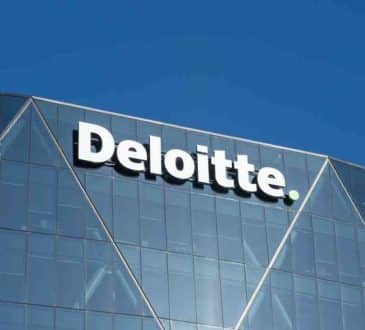The Role of U Theory and the Dramatic Arc in Business Transformation

For decades, business leaders have sought to break unproductive habits within organizations that hinder productivity and innovation. This gave rise to the field of business transformation, which has seen countless transformations of its own.
While a number of methodologies and strategies exist to provide a framework for business transformation, there are two that our own firm has found to provide the most significant and sustainable impact for organizations across industries, geographic regions and sizes. These are the business transformation frameworks known as U Theory and the Dramatic Arch.
When leveraged properly, these two frameworks can assist business leaders in their quest to engage people, build trust, and drive new growth. While these tactics are quite different from each other, they can also supplement one another harmoniously.
You may ask why two approaches that seem so different on the surface are able to work together to achieve a goal. It’s important to remember the multi-faceted, complex nature of successful business transformation. Sustainable transformation requires quantitative and qualitative changes. It requires changing mindsets, behaviors and workflow patterns to adapt to a more complex environment. At the same time, it also requires deep engagement across the organization to drive a culture that embraces change. That is why engaging storytelling and sustainable behavioral change are closely intertwined.
What Is Theory U?
The concept of U Theory was pioneered by MIT professor Otto Scharmer in his hallmark book “Theory U”. To create the book, he interviewed roughly 150 innovators in the business and science fields. He used the insights that he gained from these interviews to expound upon basic principles of management and learning.
Scharmer crafted these principles into a comprehensive U Theory that consists of seven key stages, which are labeled as follows:
- Downloading
- Seeing
- Sensing
- Presencing
- Crystalizing
- Prototyping
- Performing
In addition to the seven stages outlined above, the U Theory also includes three layers. The first layer is known as “Open Mind” and should coincide with Steps 1 and 7. The second layer is referred to as “Open Heart” and corresponds with Steps 2 and 6. Scharmer refers to the final layer as “Open Will,” which includes Steps 3, 4, and 5.
Scharmer explains that the bottom of the “U” is where the magic happens. He refers to this step as presencing. During presencing, he encourages the recipient of new information to drop their ego so that they can receive the knowledge being presented.
Each of the stages above can be seamlessly integrated into business strategies in order to drive new growth and nourish innovative ideas.It’s important to note that business transformation isn’t simply about creating new processes or rebuilding a business model, at its heart, it’s about engaging employees through a long-term strategic process of growth.
What Is the Dramatic Arc?
Whereas Theory U is beneficial for developing a framework for change, the dramatic arc focuses on storytelling. This can provide a strategy for communicating your transformation in a compelling way that builds trust in the process and the vision.
Dramatic Arc has five distinct phases that must be understood to effectively harness its impact. They are essentially the main components of a story that communicates your vision for business transformation. These stages are often referred to as Freytag’s Pyramid and consist of the following:
Exposition
Exposition is commonly known as the “hook” or “attention grabber.” During the exposition of a story, leaders must ensure that they get the audience’s full attention.
Rising Action
While the exposition is responsible for catching the viewer’s eye, the rising action component is tasked with keeping it.
During this phase, the tension should be building towards a peak or climax. In movies and on TV, this involves some sort of conflict between the villain and the protagonist. However, in the marketing world, this is usually where the advertisers address the consumer’s pain point.
Climax
Depending on the theme of the work, the climax is the point in the story at which the hero gets the upper hand or the villain slays the protagonist.
Falling Action
During the falling action, the tension begins to fade.
Dénouement
In movies, novels, and similar forms of entertainment, the dénouement is the phase of the story in which everything returns to normal. The hero rides off into the sunset and any outstanding issues are resolved.
How to Implement This Into Your Business Transformation Plan
Theory U and the dramatic arc are valuable strategic tools. If you are interested in implementing these transformative theories into your business model, you should:
Create Shared Intention
Employee contribution is an essential component of any transformation. With that in mind, it is important that you also “download” information from your staff. Hold an open forum and give team members in various roles an opportunity to speak.
During the presencing phase of U Theory, this approach will allow you to “let go” of old ideas while also giving you the opportunity to receive new thought processes. Your staff members will also have the chance to apply U Theory to gain a better understanding of your point of view.
Shift Your Perspective
For U Theory to truly work, it’s not enough to motivate change among a team. Equally important is leadership providing the tools, training and vision to build employee trust behind the transformation itself. As the thought leader for your organization, be willing to look at things from your staff’s point of view and encourage them to expand their perspective. By doing so, you may realize that you have been overlooking certain issues that are harming your company’s culture.
Focus on the Future
During this phase of implementation, you must start “presencing.” This means giving your team the support they need while also expressing your future goals for the organization.
Make sure to discuss how various teams will fit into this future, as it is important to help employees feel involved in the transformation process,which greatly increases engagement and organic growth around the business shift.
Prototype the Shift
After conferring with your team and identifying undesired habits or aspects of the work culture, it is time to prototype a solution. It is best to test the new approach on a small scale. If it is successful, then you will be ready to advance to the final stage of the implementation process.
Perform
Scharmer referred to the final component of U Theory as “co-evolving.” After the prototype phase establishes proof of concept, your approach or idea is ready for a full-scale rollout.
If you are using the U Theory for personal growth, this means fully adopting your new habit. In the broader sense, it might mean acquiring the requisite resources to launch a multi-stakeholder endeavor.
Final Takeaways
The dramatic arc gives you a proven template for creating engaging stories so that you can ensure your message is understood, absorbed, practiced, and adopted.
U Theory is geared towards enhancing engagement, building trust, and teaching individuals to adopt new patterns.
Together, these methodologies can help you effect real change within your organization while you encourage your staff to learn something new.
Both methodologies rely on a learning-by-doing approach. Because of this, you can incorporate the dramatic arc into each stage of Theory U, thereby reinforcing the change that you are trying to create.
When used together, these strategies can create meaningful change that will transform your business.
Written by Mauricio Vianna.
Add CEOWORLD magazine to your Google News feed.
Follow CEOWORLD magazine headlines on: Google News, LinkedIn, Twitter, and Facebook.
Copyright 2024 The CEOWORLD magazine. All rights reserved. This material (and any extract from it) must not be copied, redistributed or placed on any website, without CEOWORLD magazine' prior written consent. For media queries, please contact: info@ceoworld.biz








